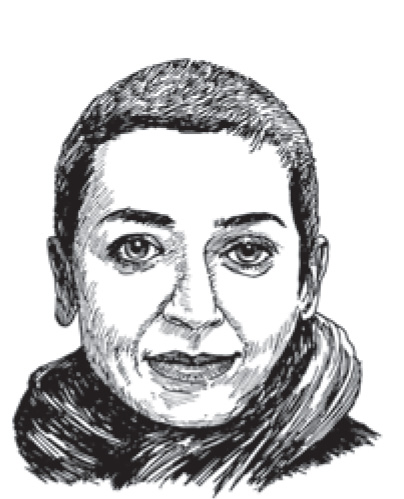Zainab Salbi’s energy is formidable. Even standing still, she seems to be leaning into the wind. Her short-cropped pepper-and-salt hair, expressive eyes, and quick, bright laugh lend her a youthfulness that belies both her age (forty-five) and the chilling past she evokes in her 2005 memoir, Between Two Worlds (cowritten with the Los Angeles Times’ Laurie Becklund). It’s a remarkable book. It describes the surreal and scary experience of growing up in Saddam Hussein’s inner circle: Zainab’s father, for a time, was his personal pilot. She and her family spent their lives immersed in a bizarre cocktail of luxury, coercion, and fear, including unannounced late-night visits from “Uncle” Saddam in which he held court in their living room, got drunk, and slow-danced with women in front of their husbands. It was a world she ultimately escaped, with her mother’s help, through a brief and unhappy arranged marriage in the United States. When she emerged, she had no idea what to do, or whom to be.
She found her feet, however, with astonishing speed. At the age of twenty-three, driven by a desire to help the victims of sexual violence in Bosnia, Zainab founded Women for Women International, a nonprofit that provides support to women survivors of war. It grew to become the largest international women’s organization in America after Planned Parenthood, distributing more than $108 million in direct aid and microcredit loans in its twenty-plus-year history, and as its leader, Zainab became a sort of icon for the global women’s movement. She has testified before Congress, appeared on Oprah ten times, and still turns up regularly on MSNBC, Al-Jazeera, and other mainstream media, often to represent an Iraqi perspective on current events.
But an icon isn’t really a human being. The tension between these two modes kept finding its way into her life, and she stepped down from her own organization in 2011 when she felt she was at risk of becoming a figurehead. I met Zainab at the vast Metropolitan Museum of Art in New York, where we spent three hours, mostly in its Ancient Near Eastern and Islamic Art galleries, discussing her life and the past and future of her home region and culture. Lucid, upbeat, and endlessly philosophical, Zainab frequently checked in with me by saying, “Do you see what I mean?”—or with herself, by tapping her breastbone with two fingers. It’s a gesture she makes with such force that in a quiet room she resonates like a drum.
Zainab took a few swigs from an aluminum water bottle, but otherwise talked indefatigably from one end of the museum to the other—even though she’d just returned from climbing Mount Kilimanjaro...
You have reached your article limit
Sign up for a digital subscription and continue reading all new issues, plus our entire archives, for just $1.50/month.
Already a subscriber? Sign in





